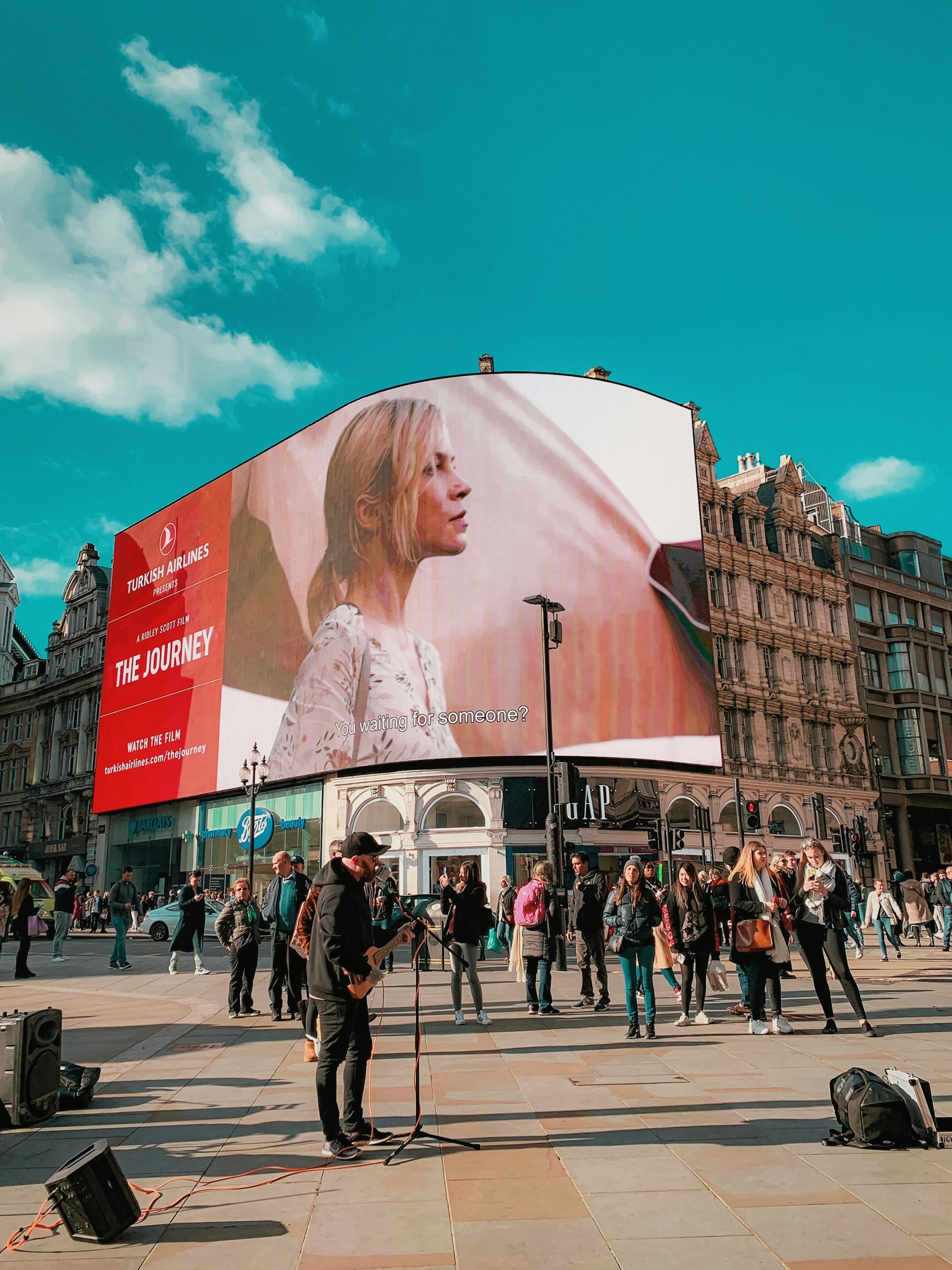Want to Outsmart the Noise of Digital Marketing? Try Out of Home

One of the biggest value propositions of digital advertising is the ability to measure impact with precision.
A marketer, using a simple dashboard, can easily assess the visibility of how campaigns perform—and how that performance translates back into a clear, return-on-investment picture.
That’s a big promise—with guaranteed job security—for marketers overseeing large advertising budgets.
But what if that data isn’t telling you the full story?
According to research from Rakuten Marketing and eMarketer, companies waste an average of 26% of their budgets on ineffective channels and strategies. About half of respondents from this survey say that they misspend 20% of their budgets.
There are a few reasons why:
- With any campaign comes the potential for click fraud, meaning that bots rather than people are engaging with your advertisements. According to one study, click fraud rates have been increasing since 2016—in part, due to the sophistication of bots.
- When people use their desktop and mobile devices, their attention spans are often spread-thin. The Association of National Advertisers points out that only one-quarter of all digital ad spend reaches actual people.
- Most people are averse to ads—and despise advertising so much that they are taking active measures to avoid brands’ marketing messages, altogether. According to a 2019 study from eMarketer, one-quarter of U.S. consumers block digital ads.
- New technologies are emerging to counteract
- Reporting dashboards aren’t always as accurate as you may think they ares—often, advertising networks use different methodologies to calculate a return on investment,
As companies—and revenues—grow, so does the opportunity cost of media waste. That’s why Procter and Gamble (P&G) one of the largest brands in the world, cut back its advertising spend by $200M in 2017. Suzanne Vranica, reported in the The Wall Street Journal in 2018:
“The ad dollars were pulled back from a long list of digital channels but also included reducing spending with “several big digital players” by 20% to 50% last year, according to Marc Pritchard, P&G’s chief brand officer.
He has been leading the charge among marketers as a vocal critic of digital advertising clutter, ad fraud and brand safety issues on platforms like YouTube.”
Media waste adds up—and ROI expectations are often deceptive. According to another study with AlixPartners, consumer brands across food, beauty, and household categories spent $242 billion on advertising in 2018., with digital “commanding a $60 billion share.”
Across all channels, a combined $50 billion went to waste. Another surprising finding was that ROI remained a pain-point, with half of digital ad spend showing either a negative ROI or no ROI at all.
It’s these reasons why digital marketers are opening their eyes to new efficiencies and opportunities to reach consumers. In many ways, 2020—and the years upcoming—represent a blank slate for marketers to rethink how they’re reaching their audiences.
It’s this reason why eMarketer expects out of home advertising—billboards, bus station ads, radio ads, etc.—to grow faster than most other ad mediums.
Here are some tips for using out of home (OOH)—often called outdoor advertising—to enhance the efficiency and performance of your digital channels.
1. Connect your campaigns through backend analytics
Audience fragmentation is the new norm of marketing. It’s challenging to reach potential buyers in decision-making moments—because it’s unclear when, exactly, those moments are.
One trend remains consistent, however: the power of the mobile phone.
From televisions to work computers, home laptops, and tablets, consumers move between devices as they move throughout their days.
But they’re always holding on to their phones.
It’s this reason why out of home platforms have the potential to build attribution models that are more precise than their digital counterparts. You can build campaigns that connect an ad unit as simple as a billboard, with audiences’ mobile phones.
For instance, AdQuick has built geo-fencing capabilities to align mobile banner ad deliveries with close-proximity OOH placements.
As an example, in 2018, one AdQuick advertiser ran a campaign in San Francisco at a main transit hub, the Caltrain station. When people would look up to see a train arriving, they would also see the ad. If they were on their phones on an app—playing a game or checking the weather, for instance—the banner ad would also show up on their phone.
In addition, this campaign’s marketing team ran pre and post brand awareness surveys to understand the lift—and to compare performance between digital and offline channels, as well as all channels combined.
Using AdQuick, the advertiser was ran the study two weeks before and two weeks after the campaign. Geographic data helped identify target audiences—tech workers— based on their proximity and likelihood of using Caltrain.
2. Analyze earned media
Most marketers know that word of mouth is a timeless, powerful marketing force. It’s a good sign when people have positive things to say about your business, given that people are more likely to trust peer referrals than any other marketing source. One survey from Collective Bias found that peer influencers are 10 times more likely to drive in-store purchases than celebrities.
The reason?
People trust the knowledge and expertise from their immediate social networks including their friends, family, employers, and professionals in local communities.
To better understand the reasons behind this trend, Jonah Berger, a professor at the University of Pennsylvania’s Wharton School of Business, released 10 years’ worth of research to understand what drives word of mouth, both online and offline.
Here are six well-researched, data-backed reasons:
- Social currency. People want to feel like insiders and increase their own perceived value as individuals within their communities.
- Triggers. People want to surprise and delight their friends with new, interesting information.
- Emotion. People share the things that they care about.
- Public observability. People see what they like and then catch on (i.e. Airpods)
- Practical value. Beyond looking good, people want to help others. The ability to offer value raises an individual’s social capital.
- Stories. People don’t want to be walking advertisements; rather, they want to convey a meaningful message as part of a larger narrative.
If your OOH campaign does its job in delighting, surprising, and engaging audiences, people will talk about it for the reasons mentioned above.
If people talk about it online, you can measure it.
AdQuick, for instance, has developed a proprietary image recognition tool that scans social feeds for photos of people sharing campaigns. It’s possible to scrape public profiles Twitter or Instagram, for instance, to see how much visibility an OOH placement received.
Earned media has the potential to create a ripple effect for your business in both digital and offline environments. OOH creates a blend between these two worlds.
“OOH’s ability to deliver mass reach and maintain audience is a significant competitive strength,” writes Minda Smiley for AdWeek. “Nielsen found 66% of U.S. travelers report taking an action on their smartphone after exposure to an OOH ad. By generating engagement in the real world, OOH’s value to brands is stronger than ever.”
3. Create a direct response call-to-action action
In online advertising environments, direct response channels have the potential to generate waste. That’s because consumer’s attention spans are spread thin. Expecting someone to engage with an ad—and respond in the moment—is a big “ask.” When people are at the computer, they’re likely busy.
With out of home channels; however, the “ask” tends to be easier.
"Sadly, some of the mainstream traditional media has become very secondary in terms of how we consume it," says Tim Ringel, global CEO of ad agency Reprise Digital. "We don't consume it consciously anymore because the moment a TV ad comes on, we are on our phone. It's different with many OOH formats where, if you're really creative, you can't really escape that bus stop. You can't really escape that subway station. You know what I mean?"

One idea? Send audiences to a simple landing page, or direct them to your storefront—whatever transaction event connects human interest to revenue. Offer a discount code. Make it easier to track campaign outcomes by leading audiences to an action through your campaign.
Final Thoughts
Make your out of home experience memorable for your audiences. Bring an artistic touch to your campaigns. Don’t sound like an ad. Give people a story to care about. Then, take these “sound bites” and blend them with the narrative that you deliver digitally. Outsmart media waste—and build more efficient campaigns—with out of home.

